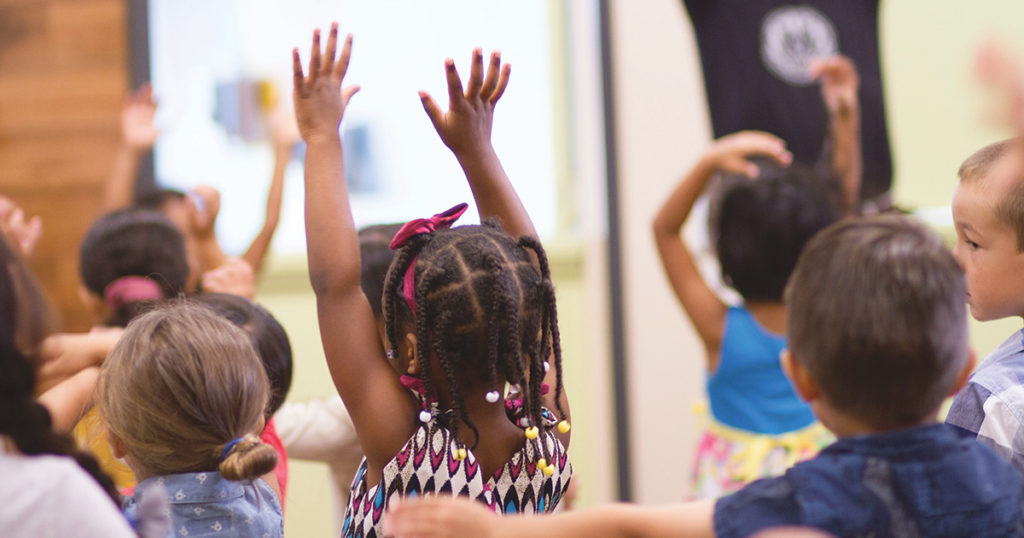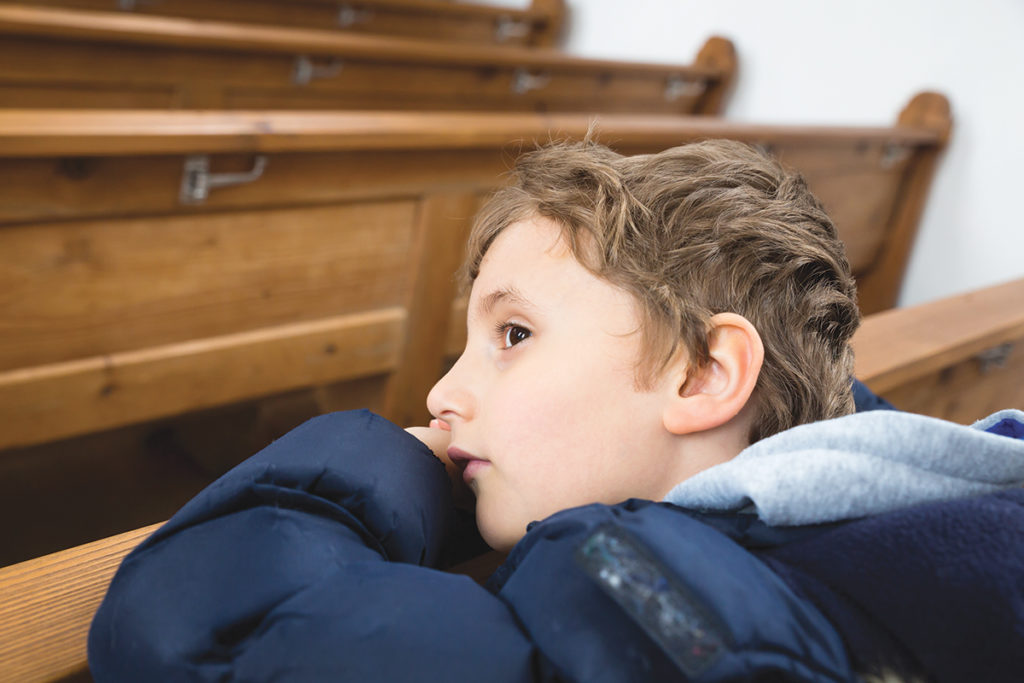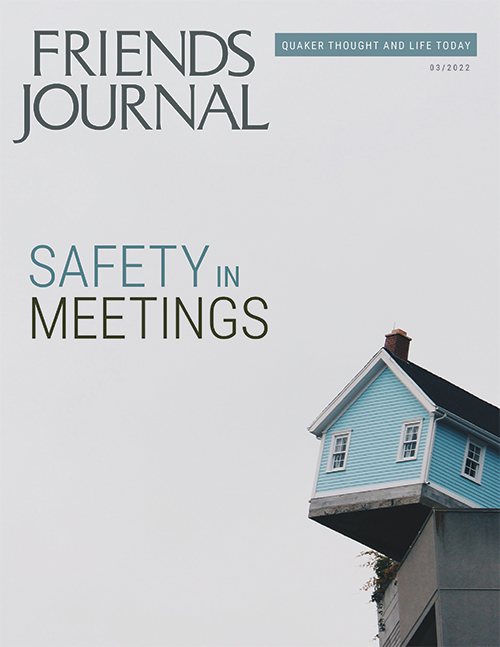Child Safety in Meetings
A Bargain for Frances, a beloved book in the children’s series about a spirited badger-child, includes the line, “Do you want to be careful, or do you want to be friends?” Frances is addressing trust and friendship in her question to a peer, and both topics are at the heart of the matter of child and community safety in our meetings.
Quaker communities have always offered valuable opportunities for friendship and mentorship across generations. As we wonder about the future vitality of Quakerism in North American yearly meetings, we find hope for intergenerational connection and mutual support. Quaker sociologist Elise Boulding wrote, “The crying need in our world is for child-adult friendships outside the family.” Outside the family, children may not have many places where they participate in multi-generational communities. At the same time, the trust that lies at the heart of friendships needs to be grounded in concern for safety in any community where adults are with children.
As Quaker meetings, what can we offer families with children?
- A place to be welcomed as individual seekers, and as a family
- A place to wait together with the Presence in our midst
- A place to be truly seen, heard, and known
- A place to know that of God in each other
- A place to learn how to discern truth and goodness
- A place to work together for a better world
- A place of friendship across and throughout life’s span
- A place of trust
- A place to grow
Meetings are dedicated to love, truth, and Light: going to the heart of what is important. The experiential learning at the root of Quaker faith is inherently relational. Multi-generational Quaker meetings can be communities where children are seen, heard, and cherished; where children can experience openings of the Spirit and grow in love and truth alongside Friends of all ages; and where children can develop lifelong friendships. Parents come to Quaker meetings seeking spiritual nurture and connection. To feel truly welcomed, families need to know that the meeting honors boundaries, that child safety is an intentional practice, and that the meeting is seeking to create a safe and welcoming space where children and youth can experience inclusion in the community.
Community is all at once precious, intangible, and vulnerable. It is tempting to think that Quaker meetings are inherently safe if grounded in love, truth, and Light, yet we are well-advised to be clear-eyed about risks and instill robust child safety procedures into both in-person and online interaction. How can we balance the transformative possibilities of adult-child friendships while creating a safety net to ensure that all relationships are healthy and grounded in Spirit?
God’s love welcomes all of us, regardless of our brokenness, and calls upon us to offer our best to one another. How can meetings welcome every person as a child of God, yet safeguard our children from those who may—inadvertently or intentionally—pass their trauma along to our children? What can we learn from other churches about protecting children from abuse at the hands of people in the meeting, especially those who work with our children and youth?
The Child Safety Net: Policies and Practices
It is an unfortunate fact that people who would prey upon children look to faith communities as places of naive acceptance. Quaker meetings are no exception. In our religious education programs, how can we fulfill our sacred trust to nurture the spiritual growth of young Friends in a loving and safe community?
A well-developed and faithfully implemented child safety protocol is a deterrent to child predators. Meetings should budget the modest expense necessary to conduct criminal background checks on all staff and volunteers. (In some states, there is no cost.) All staff and volunteers should be required to successfully complete training, such as Stewards of Children®, a brief online course offered by the child abuse prevention organization Darkness to Light.
“Mandatory reporter” training should be required for all staff who work with children, regardless of whether or not their professional background legally requires them to report child abuse and neglect.
Child safety is the work of the whole meeting, not just a religious education committee. Some general practices used by many meeting communities include conducting children’s classes and activities in places that are visible from the general space with open doors, or with doors that have windows to hallways, and with lights on. The “rule of three” can be applied for all meeting activities whether in the meetinghouse or off-site. The rule of three specifies that there should always be at least three people present when working with children: one staff or volunteer and two or more children, or two adults working with one child. To find examples of child safety policies developed by monthly and yearly meetings, search “child safety” in the Quaker Religious Education Collaborative website’s resource library.
The local meeting bears responsibility to educate children and youth on positive relationships and healthy boundaries with adults as well as with other children and youth. Parents should be involved in identifying goals and choosing from an array of developmentally appropriate methods and resources. Children’s books and puppets are helpful in modeling how a child can identify discomfort and withhold consent—even from an adult or an older child. A good example is Kimberly King’s I Said No! A Kid-to-Kid Guide to Keeping Private Parts Private. Understanding consent is also learning and important practice for all adults in the community.
Child safety must also be considered for online interaction. When meetings pivoted to online in March 2020, several yearly and monthly meetings recognized the need for online safety procedures. We recommend Britain Yearly Meeting’s and Philadelphia Yearly Meeting’s policies as examples.

Photo by Erika Giraud on Unsplash
It is tempting to think that Quaker meetings are inherently safe if grounded in love, truth, and Light, yet we are well-advised to be clear-eyed about risks and instill robust child safety procedures into both in-person and online interaction.
Policy Writing: A Shared Task
Many meetings today articulate a hope to welcome new families, or more families, and the authenticity of that welcome is tested by our preparation to include families with children in meeting life. Are we ready to fully welcome newcomers of all ages? A meeting was challenged by this question when a Friend in business meeting expressed concerns about the community’s safety. Several new families were attending and the meeting and the families were still getting to know one another. The specific question (asked with care for community and also stewardship of property) was whether the meeting’s insurance policy had adequate coverage should there be any kind of child safety-related concern. The meeting created an ad hoc group to craft a child safety policy. Their process might serve as a model for breaking down the silos that sometimes exist between committees of the meeting.
The small group included Friends serving on the children’s religious education, care and counsel, and worship and ministry committees. Sample policies from both the quarterly and yearly meeting were used as models. The clerk of the meeting regularly checked progress, as did the meeting’s insurance agent, who supported their understanding about church safety policies and the requirements of coverage. Each time a new draft of the child safety policy was prepared, it was brought to meeting for worship with attention to business and the whole body was given the opportunity to hold the document and proposed practices in their care and discernment. It was both a practical process and a Spirit-led one. The people working on the policy felt the support of the meeting, and care for current and future children was woven throughout the conversations. A deeply held concern for the community’s future as a multi-generational body was at the heart of the original question asked, the meeting’s process of discernment, and the policy that was finally approved.
Among the nuts and bolts of a meeting’s child safety policy (alongside practices like open doors and sign-in/out sheets for children’s programs) are two vital practices related to trust and communication: background checks and reporting. In addition to clarity about how background checks are done for volunteers and employees working with minors, the meeting should be in unity about where those records are securely stored and who is responsible for updating them on the schedule defined by the policy. The meeting also needs a clear plan for reporting abuse or responding to concerns from the meeting. If a situation of this kind occurs, it is important to be clear who will communicate with law enforcement, insurance, and the community, and how support and pastoral care for healing will be offered to individual Friends and to the community.

Photo by T. Agrici
Time and care-full intention given to child safety practices serves community safety and indicates the love and welcome for all that can be found among Friends.
When a Sex Offender Seeks Community
A man came to a monthly meeting on parole from prison, having been convicted of child sexual abuse. He approached the clerk and described his crime and the conditions of his parole. He also told of worshiping with Friends in his youth, and that he was looking to the meeting for fellowship and healing. Meeting for business assigned a support committee to work with him and his parole officer to support his re-entry into society and discern how he might sit in worship yet have no contact with children.
After an Internet search for the experience of other monthly meetings, the committee prepared a minute and procedure for consideration by the meeting as a whole. All adults in the meeting were invited to a threshing meeting on how to welcome this man in a spirit of acceptance yet safeguard the well-being of the meeting’s children and youth. Intense feelings surfaced from parents, from Friends who had been traumatized by abuse themselves, and from those who had been bystanders in abusive situations.
After several threshing meetings, the meeting community arrived at a place where all Friends felt heard. In the end, a procedure was approved by which the man could enter after worship had begun and only if no children were present. He could sit in a chair with members of the support committee on either side and leave before children joined worship at the conclusion of First-day school. The procedure was maintained for several months until the man was required by his parole board to move to another county.
This experience taught these lessons:
- We are called to radical acceptance: to see that of God in everyone, without exception.
- We must research best practices and adapt procedures from other meetings and faith communities.
- To balance privacy and openness, a small committee can discern the way forward with the sex offender and criminal justice officials, but abuse concerns the whole meeting, not just those most closely involved or at risk.
- We can look upon threshing as an opportunity for healing of the person in focus, but also for others.
Friends in Care
The suggested policies and practices shared here are not exhaustive, and Friends should consult resources in their own and other yearly meetings, as well as from organizations like the Quaker Religious Education Collaborative. While grounded in experience, the cautionary ideas shared here must be balanced with opportunities for child-adult relationships, one of the precious aspects of meeting life. Such relationships can grow into lifelong mentorships, serving as a touchstone for young Friends navigating life choices. Friendships across generations that are reciprocal in their energy and mutual in their interests are the solid foundation of growing intergenerational spiritual community, which we see as the future of our faith.
Perhaps there is no need to choose when considering the question in the children’s story, “Do you want to be careful, or do you want to be friends?” The word “careful” can mean making sure to avoid potential danger or harm, but the other definition is “done with or showing thought and attention.” Time and care-full intention given to child safety practices serves community safety and indicates the love and welcome for all that can be found among Friends.
Suggested Resources:
- Safety First: Why You Absolutely Can’t Skip Background Checks
- Developing a Child Abuse Prevention Policy: A Monthly Meeting Resource
- Stewards of Children® Prevention Training
- Northern Yearly Meeting Children and Youth Policy Manual
- Friends General Conference: Child and Staff Safety Training and other resources
- Philadelphia Yearly Meeting’s Friends Who Care for Youth: Child Safety Background Checks
- Britain Yearly Meeting: Safeguarding Information
- Australia Yearly Meeting: Supporting A Safe Quaker Community Policy
- New England Yearly Meeting’s Child Safety for Virtual Youth Programs
- Philadelphia Yearly Meeting’s Guidance and Practices for Online Youth Gatherings when participants are under the age of 18
- Guidelines for Virtual Meetings, Northern Yearly Meeting
- I Said No! A Kid-to-Kid Guide to Keeping Private Parts Private by Kimberly King




Such an important and powerful article! I attend a small meeting where years ago I learned that one person in our meeting was aware of the need for care in safeguarding our children, and had guided our group in avoiding occasions of possible danger to children. I had never even thought of such a thing. At the same time this person helped us in learning to welcome children into our meeting with joy and open hearts. I am so grateful, as I am for this article.